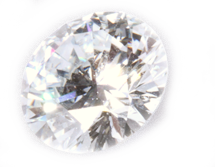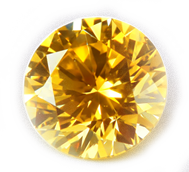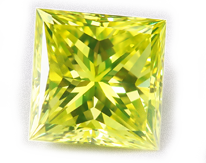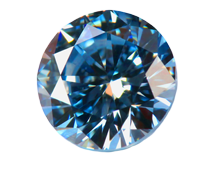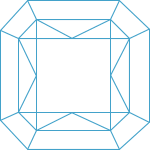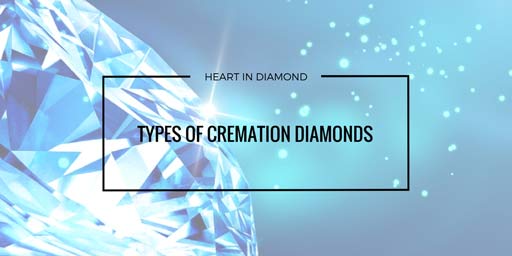
Table of contents:
- White diamonds
- Orange-yellow diamonds
- Yellow-green diamonds
- Deep red diamonds
- Blue diamonds
- Diamond cuts
- Diamond clarity
- Diamond carat and sizes
- Lab-grown diamonds
Cremation Diamond Guide
At Heart In Diamond, we believe in preserving our unconditional love and magical memories of happier times spent with our family members, friends, and pets after they have passed away.
We have personally witnessed how cremation diamonds change people’s lives and because of this, we believe these treasured man made diamonds are a therapeutic way to deal with the intense emotions we experience following the loss of a loved one.
With cremation rates on the rise across the US, many people are choosing to have their loved ones turned into beautiful diamonds. Not only is turning ashes into diamonds a wonderful way of preserving the bond you developed together, but it’s also a sustainable and eco-friendly solution when compared to both burials and mined diamonds.
The process of turning ashes into diamonds involves extracting carbon atoms from human or animal cremains. The carbon atoms are then added to our laboratory foundation. Through the use of high pressures and high temperatures, a beautiful diamond develops. At Heart In Diamond, we create diamonds in 70-120 days. This is significantly faster than mined diamonds, as Danielle from Gem Gossip explains:
“Before arriving at the Earth’s surface, diamonds might remain in the Earth’s mantle for as long as a few hundred million years.”
cremation diamond productionYour Guide to Understanding the Four C’s of Cremation Diamonds
COLOR
Choosing a remembrance diamond’s color is a rewarding journey that many people often feel is the most important decision when it comes to selecting their memorial jewelry.
The shade, warmth, and vibrancy of each diamond’s color denotes attributes that will remind you of your departed for years to come. None of our fancy colored diamonds will ever fade. They’ll always retain their intense luster and brilliance, whether you choose yellow diamonds, green diamonds, blue diamonds, or white diamonds.
People who’ve made a memorial diamond with Heart In Diamond often remark that the color they chose is the aspect of their jewelry that reminds them most of their deceased loved one.
This is what Jacqueline from the UK had to say about her yellow diamond:
“I am very happy with Heart In Diamond. The lovely yellow diamond made from my dad’s ashes is perfect.”
Here’s another quote from a testimonial written by Marlene in the United States about her blue diamond:
“I absolutely love my ring. It is beautiful and I like the deeper hue of blue. It’s so perfect for me! When I show people the ring, they say it is me. It really does fit my personality. And I chose blue because it was my husband’s favorite color.”
Bebe from Champagne Gem describes the importance of diamond color in her blog:
“In fancy color diamonds, Color outweighs all other Cs (clarity, cut and carat) in determining the value. Color has three attributes that help grading it properly: hue (the appearance of red, blue, green, or anything in between), tone (the relative lightness or darkness of a color), and saturation (the relative strength or weakness of a color). The color
appearance of a diamond is the result of a combination of these three attributes.”
White Diamonds
For many diamond collectors, the ideal or perfect diamonds are those that are completely without color. These are known as white diamonds, colorless diamonds, or translucent diamonds. At Heart In Diamond, our white diamonds shine brilliantly in any light. White diamonds are a timeless selection loved by many for their versatility and ability to coordinate flawlessly with any ensemble.
Despite the name, white diamonds aren’t internally flawless when it comes to color. Every white diamond has a slight tone of yellow or brown. This is most often due to the presence of nitrogen atoms.
The Gemological Institute of America (GIA), has a grading scale for fancy colored diamonds. Their grading criteria for white diamonds assigns an alphabetical grade that ranges from D (totally colorless) to Z (heavily tinted). The white diamonds closer to D contain fewer nitrogen impurities, while the white diamonds closer to Z contain the most nitrogen impurities.
Diamonds without any nitrogen impurities at all are known as type II diamonds. The lack of nitrogen atoms means a type II diamond is completely clear and has no color at all. Type II diamonds are formed under extremely high pressures (more so than other types of diamonds) and often take longer to make.
Type II diamonds come in two categories: type IIa and type IIb. Type IIa diamonds make up 1-2% of all the natural diamonds in the world. They contain no nitrogen impurities, making them completely colorless, and can easily be created in lab environments.
Type IIb diamonds are even rarer and make up 0.1% of all the natural diamonds in the world. Unlike type IIa diamonds, type IIb diamonds contain minor boron impurities, causing them to absorb yellow, orange, and red light. This makes many IIb diamonds look gray or light blue in color.
Type Ia diamonds make up around 95% of all the natural diamonds in the world. Type Ia diamonds contain up to 0.3% nitrogen impurities which are widespread within the carbon lattice. The nitrogen atoms’ dispersion causes type Ia diamonds to absorb blue light, making them pale yellow in color or practically colorless.
Orange-Yellow
Fire diamonds is the term for dazzling orange-yellow diamonds. It was coined by famous gemologist Edwin Streeter in his 1882 book, "The Great Diamonds of the World. These intense fancy colored diamonds certainly live up to their nickname with their characteristic fiery hues and intense luster.
According to the Gemological Institute of America (GIA), orange diamonds are graded as faint orange, very light orange, light orange, fancy light orange, fancy, fancy intense orange, fancy vivid orange, and fancy deep orange. The final two intensity levels are the most expensive and the most desired.
The orange-yellow diamonds’ color comes from nitrogen impurities. This is true for both natural colored diamonds and man made colored diamonds. The way the nitrogen atoms are arranged determines which colors they absorb. This in turn determines how light or deep the orange-yellow color is.
Orange diamonds are among the most cherished and popular color choices because of their magical appearance. At Heart In Diamond, we offer a wide range of orange-yellow funeral diamonds that are available from a slightly-tinged yellow to a very deep, rich orange.
Yellow-Green
A representation of hope, health, growth, and generosity, yellow-green diamonds typically invoke deep sentiments for the wearer. Yellow-green natural colored diamonds are some of the rarest diamonds on earth, their rarity could well be the reason for their initial popularity.
Like white diamonds, yellow-green diamonds also get their color from the presence of nitrogen impurities. And just like orange-yellow diamonds, the arrangement of nitrogen atoms determines whether this gemstone will be more of a yellow diamond or a green diamond.
The Gemological Institute of America (GIA) classifies yellow diamonds as fancy light, fancy, fancy dark, fancy deep, fancy intense, and fancy vivid. Our sparkling yellow-green diamonds are a light shade of shimmering green with intricate, semi-transparent hues.
Deep-Red
According to the experts at Cape Town Diamond Museum, red is the rarest type of natural colored diamonds found in nature. These beautiful fancy colored diamonds show the best of themselves in candlelight and daylight, looking their worst in unnatural fluorescent light.
The most unique type of man made diamonds we offer at Heart In Diamond is our deep-red precious gem. This gorgeous diamond is so special due to the chameleon-like effect of its rich color. Depending on the surrounding lighting conditions, this diamond can give off the appearance of several different shades of red.
Blue
Blue diamonds are often considered a symbol of trust, wisdom, and loyalty, with the popularity of blue diamonds constantly on the rise. Blue offers a cool and calming sensation that’s associated with serenity and peace.
Blue diamonds are a popular choice at Heart In Diamond because of their brilliant appearance that looks stunning in any choice of setting. Blue diamond hues can range from a deep blue through to blue-grey and even blue-green. Each blue diamond is classed as a fancy colored diamond which you can learn more about here.
The Hope and Blue Heart are two of the most famous blue diamonds in the world. Cathleen from the Jewelry Loupe helps explain how blue diamonds get their intense color:
“Once again, the Hope glowed brilliant red under infrared light and proved to have an extremely high concentration of boron. While type Ia diamonds showed no detectable boron, natural type IIb blue diamonds such as the Hope and Blue Heart, revealed significantly higher amounts than previously reported.
Not surprisingly, the Hope had the most by far: as much as 8.4 ppm in spots, compared to as little as .08 in other natural blue diamonds. And yet, the boron content of the blue diamonds did not, in the end, entirely explain the variety or depth of their color.”
CUT
The term ‘cut’ in relation to cremation diamonds, refers to the proportions, symmetry, finish, and polish of a diamond. This term can also be applied to a certain style of gemstone cut, e.g. princess cut.
The brilliance and intensity of natural or man made diamonds is determined by these factors. A professionally-cut diamond will appear symmetrical, proportioned, and well-polished.
Catherine from Gem Breakfast explains the difference between a well-cut and a poorly cut diamond:
“A well-cut diamond is luminous – it radiates brilliance, fire, and scintillation. A poorly cut diamond, on the other hand, doesn’t reflect light properly and appears dull. Even if a ring has excellent color and clarity, if the cut is poor, the stone will appear drab and lifeless.”
At Heart In Diamond, our three most popular cuts include:
Brilliant
Princess
Radiant
We are not limited to these three cuts, they are just the most widely selected. Several other cuts are available upon request.
Liza from Gemologue explains the expert work that goes into cutting diamonds:
“The way a gem cutter approaches a gemstone all depends on its value and size. Gems of lesser value are often cut to standard sizes and kept fairly uniform. But with finer gemstones, there’s more freedom to cut the stone to reflect its natural shape and beauty. The more the gemstone is preserved, the greater its weight and that means greater value.”
Clarity
Our laboratory conditions are strictly controlled and quality measures are maintained to ensure your personal diamond features the sharpest clarity possible. Each diamond created at Heart In Diamond is lab-grown to be unique, individual, and as internally flawless as possible.
Because every diamond is individually-grown, there may be some slight inclusions. However, these are typically invisible to the naked eye. Not restricted to man made diamonds, these inclusions are also present in natural diamonds and they are graded from SI (slightly included) to VS (very slightly included).
Margo from Margo Raffaelli explains the importance of diamond clarity:
“The degree of a diamond’s purity is determined by the size, shape, position and number of internal inclusions that are noticeable with a tenfold magnification. Almost all diamonds have defects. They make every stone unique and dissimilar to each other. It is the imperfections that help specialists to distinguish natural diamonds from counterfeits. They may also identify a separate mineral.”
Carat
Carat weight refers to the size and weight of a diamond. According to standard measurements, 200mg is the equivalent of one carat. Typical diamonds sold weigh less than one carat. Because of this, diamond weights are divided into points.
A single carat diamond is the equivalent of 100 points. Therefore a diamond that is ¾ carat diamond is also known as a 75 point diamond.
At Heart In Diamond, we offer our customers several selections when it comes to the carat weight of your diamond. Depending on the type of setting and mounted design you choose, you can order your diamond in many sizes ranging from 0.03 carat up to 2.0 carats.
Medium sized cremation diamonds
Large sized cremation diamonds
It’s a common misconception that diamond carats affect diamond prices. While this is sometimes true, it’s certainly not always the case. Higher carat weights don’t always mean higher diamond prices.
For example, with Heart In Diamond, a one carat orange-yellow diamond costs the same as a ¾ carat blue diamond. Don’t let confusion over diamond carats and diamond prices stop you from getting the cremation diamond you love.
Both demand and prices for fancy colored diamonds are on the rise, but lab-grown fancy color diamonds continue to be affordable.
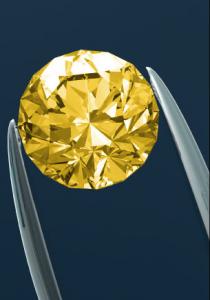
Fancy color diamonds are a rare find deep under the Earth’s crust. Some colors, such as red and blue, are among the most rare and, therefore, the most expensive. Increasingly, we see royalty, aristocrats, and celebrities wearing these unique diamonds.
Mariah Carey's engagement ring, for example, was a Jacob and Co. 17-carat emerald cut diamond worth $2.5 million with a 10-carat pink center stone, 58 pink diamonds, and two half moon-cut diamonds surrounding it. Carrie Underwood had an internally flawless yellow diamond engagement ring by Johnathan Arndt.
Fancy color diamonds are rapidly gaining popularity among today’s jewelry lovers. Demand for these diamonds in our society is experiencing continued growth year over year, and this increase in demand is leading to an increase in prices.
However, while fancy color diamonds are becoming more expensive, Heart In Diamond's diamonds remain consistently less expensive. Even within the industry of lab-grown diamonds, our gems cost less while remaining certified, professionally graded, and identical to natural diamonds.

